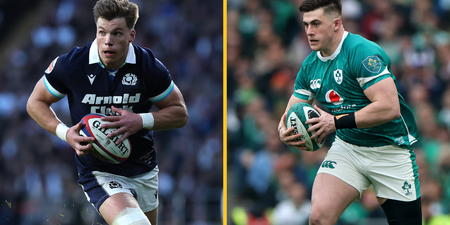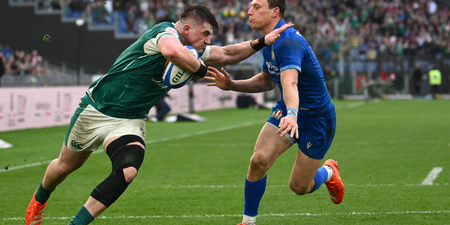Shortly after Manchester United’s win over Manchester City on Sunday a picture began to circulate on social media.
It showed David Moyes alongside Marouane Fellaini and Juan Mata, next to images of Louis van Gaal with Angel di Maria and Radamel Falcao.
Although the image was tongue-in-cheek, it can still ostensibly give rise to claims that the current Manchester United manager is, in fact, reaping the benefits of his predecessor’s good work.
It’s possibly the obvious conclusion to make, particularly when one sees Di Maria and Falcao, two expensive, high-profile, under-performing players signed during Van Gaal’s tenure, sitting on the bench.
However, while Moyes was United manager when both Mata and Fellaini arrived at Old Trafford, that’s where his influence ends.
If anything, the players’ current form further highlights the stark differences between Van Gaal and Moyes.
You can look at United’s position this season to last, the pair’s respective demeanour and trophy cabinet to do so, but the case of Fellaini effectively conveys why one failed in the job, and the other is currently thriving.
Fellaini is a symbol of both manager’s time at Old Trafford.
 The Belgian midfielder has gone from outcast to near cult hero, from being on the verge of leaving the club, less than a year after costing €38 million, to getting an Old Trafford standing ovation in a Manchester derby. Fellaini was considered the antithesis of what a ‘United player’ should be, but is now an integral member of the team.
The Belgian midfielder has gone from outcast to near cult hero, from being on the verge of leaving the club, less than a year after costing €38 million, to getting an Old Trafford standing ovation in a Manchester derby. Fellaini was considered the antithesis of what a ‘United player’ should be, but is now an integral member of the team.
When he signed from Everton on the final day of the transfer window in September 2013, it’s fair to say Fellaini wasn’t the player United fans were hoping for following a summer chasing Barcelona pair Thiago and Cesc Fabregas. It appeared there was no one else available, but Moyes put on a brave face.
‘He is a player with great ability and strength and I think he will make a real difference to our squad,’ Moyes said. ‘He can play higher up, if we need it, behind the striker or as a defensive or holding midfielder. In any position in the middle of the field he’s comfortable’.
The then United manager got the first part right, about Fellaini’s ability to play behind a striker, but Fellaini never performed with any distinction as holding midfielder. Comparing himself to Roy Keane was his first mistake.
‘Keane was an aggressive player who could win every ball. Maybe I can do this as well,’ Fellaini said, seemingly ignoring the fact Keane was excellent in possession.
Moyes tried to recalibrate Fellaini as a type of deep-seated, midfield destroyer, Claude Makelele with an afro, rather than use him as what he actually is: an advanced, midfield destroyer. It might not seem like much of a difference, but he essentially bought a cat, and asked him to bark.
 Moyes was seemingly frightened to try utilise Fellaini’s best qualities. Fear of public perception became a common aspect of his tenure as United manager. Following United’s loss to Newcastle at home, Moyes was talking about the role Robin van Persie, who was not fully fit, played in the game. ‘I was due to take Robin off after 60 or 70 minutes,’ Moyes said, ‘but I think if I’d taken him off everyone would have said: ‘What are you doing?’.
Moyes was seemingly frightened to try utilise Fellaini’s best qualities. Fear of public perception became a common aspect of his tenure as United manager. Following United’s loss to Newcastle at home, Moyes was talking about the role Robin van Persie, who was not fully fit, played in the game. ‘I was due to take Robin off after 60 or 70 minutes,’ Moyes said, ‘but I think if I’d taken him off everyone would have said: ‘What are you doing?’.
This fear paralysed Moyes two months later, during United’s shock loss to Olympiakos in the Champions League. The then Premier League champions were losing the first-leg 2-0 in Greece, in drastic need of a some type of spark, sitting deep and unable to gain any type of foothold in the game. Yet Fellaini remained on the bench.
If Moyes had have still been Everton manager, he would have had no qualms about sending on Fellaini and launching the ball towards him in an attempt to get a goal. However, Moyes was paralysed, seemingly terrified of what people would say about Manchester United playing long balls.
Whereas Louis van Gaal seemingly does not care what people say. Not only will he utilise Fellaini’s strengths, he has, eventually, found a way to fit a player into cohesive attacking structure.
 Fellaini was pivotal in United’s win the Manchester derby yesterday, winning possession, relieving pressure and bringing his more technical team mates into play. Football writer Jonathan Wilson called him a ‘deep lying targetman’ in a recent article, saying the player is ‘big and awkward and comes from a position in which he can punch holes in opposing rearguards’.
Fellaini was pivotal in United’s win the Manchester derby yesterday, winning possession, relieving pressure and bringing his more technical team mates into play. Football writer Jonathan Wilson called him a ‘deep lying targetman’ in a recent article, saying the player is ‘big and awkward and comes from a position in which he can punch holes in opposing rearguards’.
Fellaini is excelling in a position Moyes would never have used him in for United, and as part of a tactical plan he would never have implemented.
It might seem harsh to say this about the current Real Sociedad manger, who suffered enough during his time at Old Trafford, but Fellaini’s form highlights Van Gaal’s greater tactical capabilities, and suitability for such a high profile position.
Moyes said in an interview last November, that Fellaini was ‘now proving what I always believed; that he can be an important player for United’. However, the player Moyes signed, the deep-lying destroyer, was anything but an important player for United, rather it’s Van Gaal’s version of Fellaini that has excelled.













































